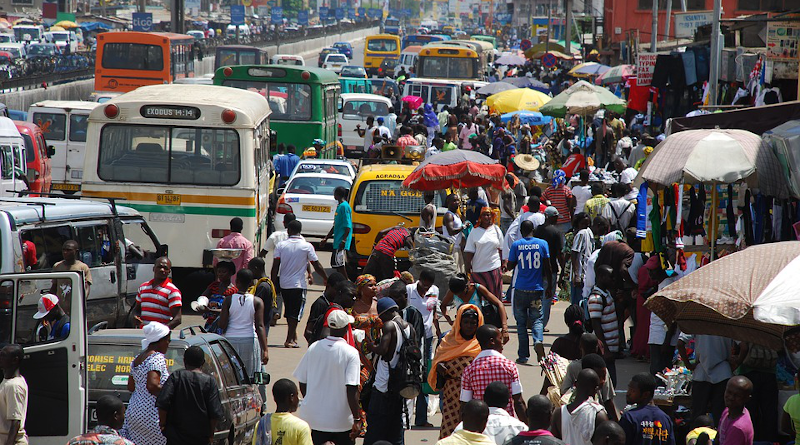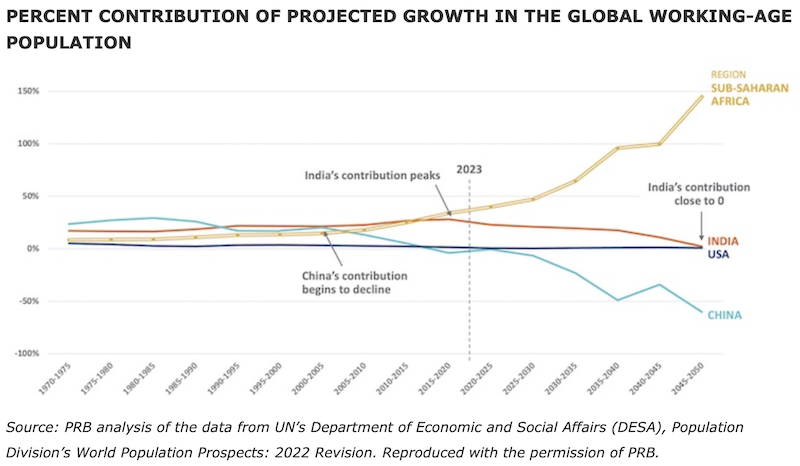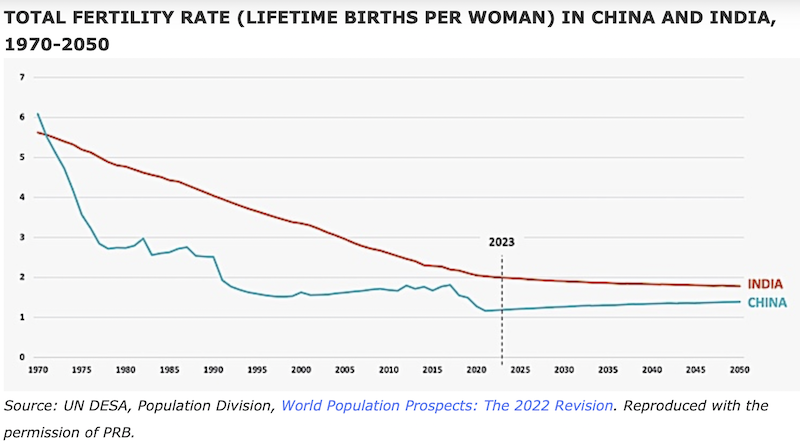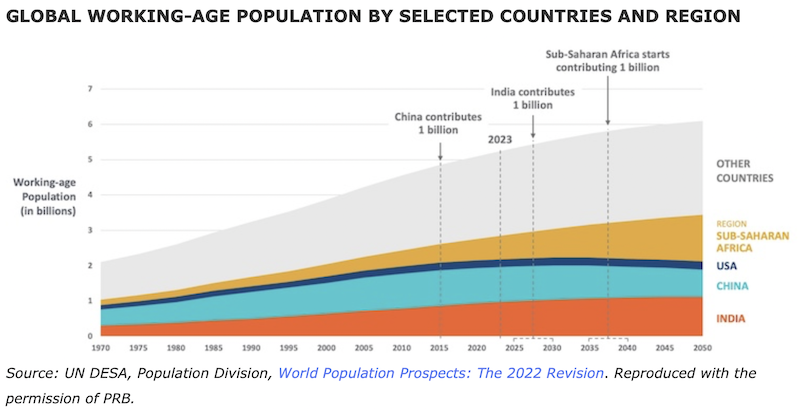Will Sub-Saharan Africa Ultimately Surpass India And China In Population Growth? – Analysis
By Thalif Deen and IDN
India and China, the world’s two most populous nations with over 1.4 billion people each, are expected to be outranked by sub-Saharan Africa in the 2030s.
A new analysis by the Washington-based Population Reference Bureau (PRB) released last week indicates that while India’s population will soon eclipse China’s, its growth is slowing.
India is on track to become an “aged society” before mid-century while the countries of sub-Saharan Africa—often overlooked—will together propel the growth of the global working-age population, according to the study released April 24.
Sub-Saharan Africa (SSA) is the term used to describe those countries of the African continent that are not considered part of North Africa.
The countries of North Africa include Algeria, Egypt, Libya, Morocco, Sudan and Tunisia, while SSAs include Kenya, Ethiopia, Democratic Republic of Congo, Nigeria, Senegal, South Africa, Tanzania, and Zimbabwe.
Barbara Seligman, PRB’s Senior Vice President of International Programs told IDN sub-Saharan Africa’s total population is projected to surpass India’s in the early-2030s.
India’s projected population in 2035 is 1.57 billion as opposed to 1.59 billion for SSA, predicted Seligman, who is also PRB’s Chief Strategy & Growth Officer.
According to the new analysis released April 24, Nigeria, the Democratic Republic of Congo (DRC), and Ethiopia are the three most populous countries in sub-Saharan Africa.
By 2035, the combined population of the three countries will be just over 600 million and by 2050, it will be just over 800 million.
SSA’s total population is projected to surpass India’s in the early-2030s. India’s projected population in 2035 is 1.57 billion as opposed to 1.59 billion for SSA.
Demographics may have helped bring geopolitical, economic, and cultural power to China, and now India. Will the same hold true for the Africa region?
“Leaders must account for the changing composition of the global working-age population in their development of policies on climate change, the global workforce, and the global economy”.
India today drives nearly a quarter of the growth in the global working-age population, and sub-Saharan Africa’s share is rising sharply, the report said.
India currently has a relatively young population, with 25% of people under age 15. Its working-age population, defined as those between ages 15 and 64, numbers 1 billion—and growing.
India contributes more people to the growth in the global working-age population than any other single country, with a share of 23%. The next largest contribution to the growth in this population comes from Nigeria, at 7%. Yet by midcentury—in less than 30 years—India’s contribution will have decreased to just 2%.
India’s fertility rate, like China’s, is decreasing, and its population is ageing.
On average, the study said, women in India today have two children, just under the number needed to replace the country’s current population. While India’s states are tremendously diverse in their economic and social development, fertility in every state has declined steadily since 2005-2006.
By 2050, 14% of India’s population will be ages 65 and older, the United Nations’ definition of an aged society.1 The United States crossed this threshold in 2014, and China crossed it this year.
It took China 23 years for its share of people ages 65 and older to increase from 7% to 14% of the total population. India will take only a bit longer—26 years—to experience this same increase.
By the mid-2050s, India will have more people ages 65 and older than under age 15. In fact, between today and 2050, India’s population ages 65 and older will grow by 144 million, the equivalent of the entire population of Russia.
India’s population will stop growing in the late 2060s.
As India’s contribution to the global working-age population begins to decline, sub-Saharan Africa’s contribution will increase.
By the late 2030s, sub-Saharan Africa’s working-age population will reach 1 billion, the size of the working-age population in India today.
By the late 2040s, three sub-Saharan African countries—the Democratic Republic of the Congo, Ethiopia, and Nigeria—will each contribute more people to the growth of the global working-age population than India.
By 2050, the 50 countries of sub-Saharan Africa together will account for 22% of the entire global working-age population. India’s share will be 18%, China’s 13%, and the United States’ 4%.
The relative share of the global working-age population living in sub-Saharan Africa will continue to grow through the 21st century.
While population size helped confer geopolitical, economic, and cultural power to China and India, Africa’s growth may have been overlooked.
Definition of Terms
Labour force: All persons who are employed and who are actively looking for employment.2
[Total] fertility rate: The average number of children that would be born alive to a woman (or group of women) during her lifetime if she were to pass through her childbearing years conforming to the age-specific fertility rates of a given year. This rate is sometimes stated as the number of children women are having today.3
Working-age population: Commonly considered persons ages 15 and older who are actively engaged in the labour force, whether they are employed or looking for work. For data analysis purposes, PRB considered persons ages 15 to 64 to comprise the working-age population.4
The data in this analysis are taken from the United Nations, Department of Economic and Social Affairs, Population Division’s World Population Prospects: The 2022 Revision and PRB’s 2022 World Population Data Sheet (download the PDF for full data).
Thalif Deen, author of the book “No Comment – and Don’t Quote Me on That,” is Editor-at-Large at the Berlin-based IDN, an ex-UN staffer and a former member of the Sri Lanka delegation to the UN General Assembly sessions. A Fulbright scholar with a Master’s Degree in Journalism from Columbia University, New York, he shared the gold medal twice (2012-2013) for excellence in UN reporting awarded by the UN Correspondents Association (UNCA).




